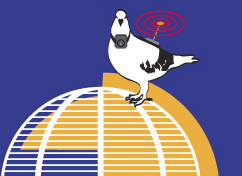art, immunology, research, genre, perversity, arrest, revelation, executability, recognition, perseverance Art's recent infiltration of stock markets, courtrooms, and mobile phones marks a seismic shift in the role it plays in society. The once-academic question "what is art" has acquired new urgency now that society depends on this collective immune system to confront technology's increasing encroachment into daily life. Drawing on case studies from our 2006 book At the Edge of Art, this paper examines the special powers granted art of the Internet age, which--no longer content to sit on a pedestal or auction block--can respond aggressively to the ethical crises caused by technology's infection of society.
Abstract Art's recent infiltration of stock markets, courtrooms, and mobile phones marks a seismic shift in the role it plays in society. The once-academic question "what is art" has acquired new urgency now that society depends on this collective immune system to confront technology's increasing encroachment into daily life. Drawing on case studies from our 2006 book At the Edge of Art, this paper examines the special powers granted art of the Internet age, which--no longer content to sit on a pedestal or auction block--can respond aggressively to the ethical crises caused by technology's infection of society. The art that qualifies for these new powers may not be recognizable to the average museum curator, and is more likely to emerge from research labs or IRC channels than Chelsea studios or MFA programs. Though they may call themselves scientists, activists, or hackers rather than poets or performers, today's electronic visionaries are redefining what art is--and isn't. For every feat of genetic engineering or copyright hacking that qualifies as executable art, there are racks of oil paintings that fail the definition and devolve to little more than expensive decor. Finally, this redefinition substitutes a spectrum of art practice in place of the 20th century's Duchampian dichotomy. Art of the Internet age ranges from individual moments of awe (artistry) to more accountable investigation at the boundary of intelligibility (research) to culturally sanctioned cases of recognition (genre). This creative spectrum moves from individual glimpse to community recognition, from inarticulate bewilderment to practiced appreciation. Each of these stages of accountability stresses different artistic functions. As art becomes more social, it loses some of its originality but gains reach. So, artistry is often perverse or arresting but is too fleeting to show more than limited revelation and execution. Research must be articulated and shared; it can be recognized by specific subcultures and can persevere through documentation or discourse. Genre is more easily recognized and preserved than artistry or research, even if it is sometimes less arresting than artistry or less revelatory than research. Society must understand and support the critical role played by all stages of this creative spectrum if art is to guide us through the unpredictable future technology has in store for us. |
